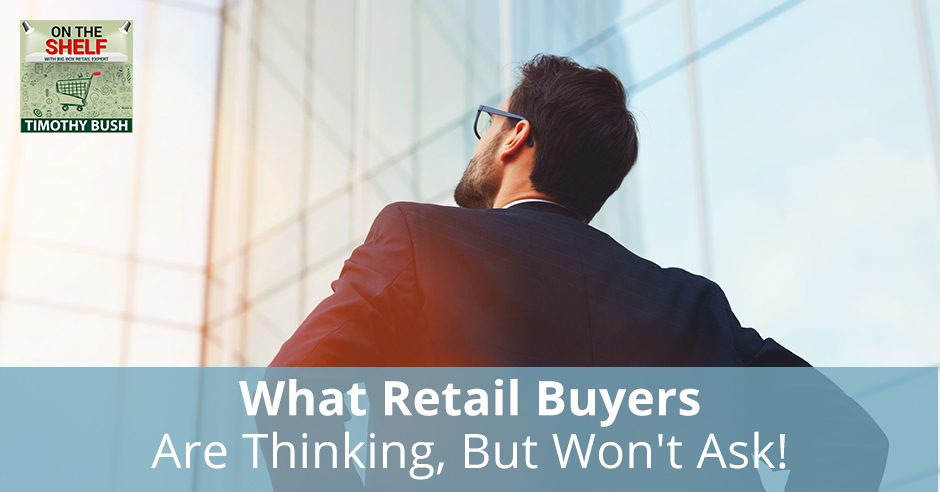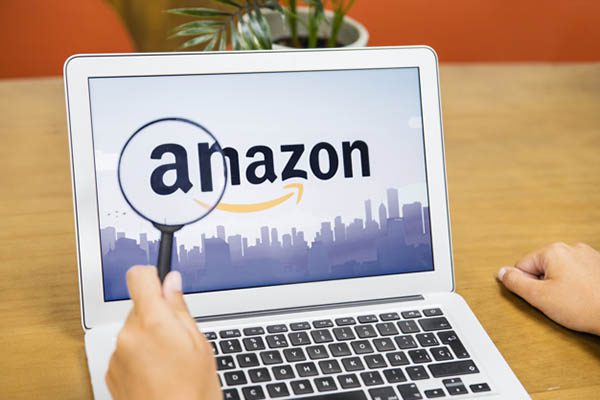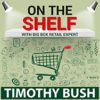
Do you ever wonder why you don’t get a ‘yes’ from the buyer in spite of what you might think is a great presentation? Do you email them and they don’t respond to you? Making a sale can be such an uphill battle. Having an effective sales pitch is a key fundamental in a sales job, therefore, you need to prepare an effective technique. Preparing an answer to their possible questions may definitely do the trick. Timothy walks us through these questions that buyers may ask you and question that buyers are thinking but will not ask you. He shares how you can effectively answer these so you can spike up your sales and go head and shoulders above the rest.
—
Listen to the podcast here:
What Retail Buyers Are Thinking, But Won’t Ask!
There are no guests on the program. It’s going to be just me. I haven’t done that in a while and I’m looking forward to dispensing some information. I’ve been compiling for a little bit based on comments, questions and actually speaking directly to buyers over the last couple of months. I have some cool information that I wanted to share with you and I’m looking forward to doing that. A quick note though, I’m leaving for Ambiente in Germany. I have never been to the largest houseware show on the planet, and I’m very much looking forward to doing that. If you are a reader, if you’re a Big Boxer and you’re going to be at Ambiente, please reach out to me so that we can meet up. I would love to meet you in person.
What Are Your Current Sales?
We’re going to talk about two different concepts. One is questions that buyers may ask you. These are fairly generic questions, boilerplate questions that might come from a buyer. We’re going to talk about how you might answer those. In contrast to that, we’re also going to talk about questions that buyers are thinking about, but they’re not going to ask you. The reason that’s important is because what the buyers are really thinking but not asking are the questions that you want to answer. Let’s get into it. My first question that may come from a buyer, either over the phone or on a sit-down face-to-face is going to be, “What are your current sales?” You may have already been asked this question by a buyer. You may have already been sitting across from a buyer knowing that your sales are not much. They say, “What’s your sales volume?”
This particular question might throw you and it shouldn’t. I want you to be honest here. I don’t want you to embellish. It’s too easy for buyers to really find out what’s going on. We used to be able to say, “We’re doing this on Amazon,” but there are multiple ways that a buyer can check your approximate sales rate on Amazon, so that’s not a good strategy. You don’t want to come off as an embellisher or even a liar. I want you to be honest. If you haven’t sold one unit, I’m going to tell you something, I’m going to be honest with you. You shouldn’t be in front of a buyer right now. If your product is not vetted, if you haven’t sold at least 200 pieces either through your own website or on Amazon, you actually don’t have any data on what the customers think of it and how the customers are viewing it or if there are any major issues.
What the buyers are thinking but not asking are the questions that you really want to answer. Click To TweetI know that you think the product’s great. I know that your family thinks that the product’s great. You have to have some independent analysis that you can share with the buyer. Before you booked that appointment, make sure that you have some sales, a couple hundred units. That way if there’s some issue with your product, something that the consumers aren’t liking, after 200 units you’re going to hear about it. The last thing that you want to have happen is to sell several container loads and have there be an issue. If you don’t have any sales, stop what you’re doing. Stop reaching out to buyers, get your product on Amazon, get it on a website and start promoting it. Let’s get some sales that way.
If you do have some sales, let’s say they’re on Amazon, a couple of other websites, maybe your website, break it down for the buyer. Let them know where you’ve been selling and how that product has ramped up. Here’s a good thing that you can do that sounds better than, “We’ve sold 500 units.” Talk about your growth rate month-over-month or year-over-year. If you’re growing, if you’re doubling or tripling your sales every month as you start to ramp up, that sounds way better than 500 units. Yet we’ve been on Amazon about three or four months and we’ve doubled our sales every single month. That could be, “I sold one last month and now I sold two you,” you doubled your sales.
Hopefully if you’ve only sold two, you’re not in front of a buyer. It sounds better if you talk percentages. It sounds better if you talk in terms of growth rate. If the buyer presses you for numbers, give them an approximate, “We sold approximately 500 units. We’ve had 50 reviews. This is what the customers are saying about our product.” Don’t say, “We’ve sold 500 units,” and then pause and let them respond to that. “We’ve sold 500 units. We’ve had 75 reviews. This is pretty much what our customers are telling us right now. This is what they’re liking most about the product,” so that you move on from your number to what it means, to what customers are saying and why they’re liking it. It’s an entire response, not just it’s a number and then let them respond.

The key here is be honest. If you don’t have any sales, go get some sales first. If you have sales, talk about it in terms of growth rate and percentage so that the buyer knows that your product is progressing. Even if it’s progressing slowly, it’s still progressing. If they want to know numbers, talk about that but also talk about your customers and what they love about the product. If you have any questions on that, feel free to reach out. There are a million different ways that you can do that with On The Shelf Now. We have a closed Facebook group, we have Twitter, and we have Instagram. We have a million different things.
How Are You Promoting Your Item?
The next question is, “How are you promoting your item?” It’s a super important question. This is something buyers really want to know and they’re going to ask. If you’re not promoting your item, don’t be in front of a buyer. If you don’t have any social presence, don’t be in front of a buyer. If you’re not actively boosting posts and promoting your product in the social sphere, don’t be in front of a buyer. You need to get that started. You need to be out there promoting your own product. I know for some suppliers it feels like sales is the final frontier, “I’ve done everything and now I need to sell this product.” Getting your product ready for sale is only halfway through the game, Big Boxers. You then have to start promoting it, then you then have to start pitching it. You then have to get it up on some eCommerce sites and actually start selling it.
Getting your product made and delivered to the US is only 50% of the way there. When a buyer asks how you’re promoting it, you need to be ready with, “We have these many followers and we’re on these many platforms. We sell on our own site, we sell on Amazon, we sell through Facebook, we sell through Instagram and we do all these different things. This is what our growth rate of followers is. This is what our engagement rate is on Facebook and Instagram. This is how many times people comment on our post and on who we’re connected to.” That’s a big one. If you have a certain product that has groups out there, whether they’re organizations or groups on Facebook, if you can connect to those, that’s huge. You can say, “These are the people in groups that we’re actually connected to and promoting through.” Be ready for that and knock it out of the park. If you’re not doing any of this stuff I mentioned, you’ve got to start doing it. If you need help with that, again reach out. We have people that handle social media and we can get you connected to them.
The key here is be honest. Click To TweetDo You Have Domestic Stock Available?
The next question, “Do you have domestic stock available?” This is a tricky question and sometimes I think buyers ask it just to trip you up, especially if you’re an international supplier trying to bring your products here to the US. “Do you have domestic stock available?” You might think, “I’m going to be honest and say no,” and then all of a sudden the buyer is like, “Interview’s over. We need you to have domestic stock.” Here’s what I tell international suppliers all the time when that question comes up. Push it back on the buyer and ask them if they like your product. You sitting down with a buyer is for one reason and one reason only and that’s to get interest in your product. That’s it. You’re not going to make a sale right there with the Walgreens buyer in their office. That’s not going to happen.
What you’re there for is to get interest from the buyer. If they ask you some qualifying questions before they even tell you if they’re interested, push it back on them and ask them, “Are you interested? Is this product interesting to you? Do you think your customers would embrace it?” If they say yes, then you can say, “I can have a domestic product here in the US in two weeks.” Produce some products, get it into a 3PL and you have a domestic product available. That’s not a problem. That’s not a disqualifier. Don’t just say, “No, we don’t have it.”
A lot of retailers require domestic product. Even if they’re going to buy containers directly from your factory, wherever that is, they want to have you be nimble. If they need to shoot product over to one store, they want to be able to draw from domestic stock. Don’t think you’re going to get away with containers from origin. I talked to a lot of suppliers that tell me, “I don’t want orders unless they’re full containers coming from my factory, prepaid, no terms.” That’s not US retail. That’s not how it works here. They’re going to want to test it, so that’s not going to be a full container unless you’re talking to somebody like Target that they’re going to test it in maybe 300 locations. That could be a full container. Generally, if you’re talking about Costco, we’re just talking ten pallets, ten warehouses. That’s not going to be a full container.

You’re going to have to bend to what they want. They’re not going to change their mind. If you’re rigid, “I only want to sell containers and I want it to be prepaid,” you’re not going to sell product here in the US. You’re not Apple, unless you have the next iPhone. We could be talking to people that have the next iPhone, but retailers don’t bend for just one vendor especially if they didn’t come to you. If you went to them and they didn’t come to you, you’re on the hook for doing what they want. I’m trying to tell you that you need to have some domestic stock. I would start researching some 3PLs at one of the ones that I’ve used in the past was Smart Warehousing. You can connect with them. They have I think eight different warehouses across the US. Two of those have refrigeration for things that need to be kept cold. You can check them out. Domestic stock, don’t just say no.
What Is Your Minimum Order Quantity?
“What’s your MOQ? What is your minimum order quantity?” It depends on who you are talking to. If you’re talking to a specialty retailer, just get the product in there. Don’t be worried about how much they’re buying. If your product is going to sell and sell well, they’re going to order a small amount and then they’re going to run out and then they’re going to want more and then more. They’re going to buy to trend. If you’re talking to a big retailer, set your first MOQ at one pallet of product, single SKU. If they’re buying two SKUs, it’s two pallets. Don’t be so worried about making this massive MOQ.
I was working with a client, it wasn’t a small retail but I think they had 26 locations. They hadn’t had an order in a while. I called the buyer and the buyer told me that out of their 26 locations, seven of them were completely out of the product, but they still couldn’t hit the minimum order quantity. My mind exploded right there, “What do you mean? I don’t care what the order quantity is, just send me an order.” We can’t have stores out of stock because if you know as well as I do, think about your own personal shopping habits. If you like a product and you go back to that store that you bought it and they don’t have it, you’re probably going to brush that off, “Next time I’m here, I’ll pick it up.” You go back again, they still don’t have it. You’re going somewhere else. That’s the bottom line. Nobody has the patience these days to go back ten times to a store that doesn’t have it. You’re starting to think, “They don’t carry it anymore.”
If you're not actively boosting posts and promoting your product in the social sphere, don't be in front of a buyer. Click To TweetI’ll give you a good example. Zarbee’s is a product that our family really likes especially during cold season. All of a sudden, Target stopped carrying the one for adults. We went back multiple times. We kept thinking, “We’re going to see it.” Then eventually, no, so we just buy it off Amazon now. We don’t even look for it at Target anymore because we don’t have the patience to go and not be able to have it. Sometimes MOQs can kill you. Don’t be so wrapped up in that. If your product sells well, they’re going to start ordering to trend and MOQs aren’t even going to be a factor for you anymore. Don’t disqualify yourself with large MOQs.
Where’s The Product For Sale?
Last two questions that the buyers may ask you in a sit-down or over the phone. “Where’s the product for sale?” This is probably a question that you already answered up in, “What are your sales?” You’ve probably talked about the different places that your products are for sale. Make sure it’s more than two, your website and Amazon. If you can get one more retailer in there, even if it’s a specialty retailer. It’s the drugstore down the street or it’s another eCommerce website. Everybody pretty much thinks that you’re going to have it on your own website and on Amazon. Try to get one more retailer in there before you go sit down with a buyer.
Tell Me What’s Unique About This Product
The last question is, “Tell me what’s unique about this product?” You know if you’re a long-time reader to this blog, I talk extensively about uniques and what makes your product different. That is more important than ever before. There are so many products out there. There are so many variations and Amazon has just created this avalanche of people taking variations off of other products. Everything has one more unique than the other one before, but you really have to understand your market. You have to understand your customers and what they want. You have to understand your product and what it’s up against so that you can identify your key uniques and what’s different about your product. Why it makes sense to put it on the shelf of their retailer before you sit down with the buyer. This is not something that you can think about or the buyer says, “What are your uniques?” You’re like, “Uhm.” When they say, “What are the uniques about your product? What makes it different?” You need to have those, “This is why customers are loving it.” You cannot pause there. You have to know your product inside and out. It has to be imprinted on the back of your eyelids.

We’re going to get into some interesting things that buyers are actually thinking but they may not ask you. By the way, answer them exactly as they ask them. Often you see in politics, somebody will ask a politician a question and they never answer the actual question. They have these set answers that they want to answer, but they don’t answer the question that was asked and that’s super frustrating. When you’re asked a question by a buyer, make sure that you answer the question and then you can always follow up and say, “Did that answer your question?” Then they confirm that it did and you’re on your way. The questions that I’m going to talk about now may not come out of the buyer’s mouth, but this is what they’re thinking. This has to be part of your pitch. Imagine if they’re thinking these things in their head and then you integrate them into your pitch, they are going to be overjoyed, “It seemed like that person was reading my mind.”
Can Your Product Handle Being In Our Building?
Questions that buyers are thinking, but they might not be asking. Number one, “Can your product handle being in our building?” There are all kinds of different ways to ask this question, but what a buyer is wondering is, “Are you prepared to do sales in my business?” Big or small, tall or short, whatever it is, they’re always wondering, “Are you going to let them down? Are you going to fail with logistics? Are you going to fail with pricing?” They want to know if they bring you in, “Are you up to the task?” One of the things that you can do and work into your pitch is you can say something like, “I know we’re just getting started or we’ve been on the market a year, we’ve been on the market two years, you might be wondering are we capable of handling the volume that might come from being in Target? Here’s what we have in place. Here’s our manufacturing, here’s our monthly production capability and here’s our logistics that we already have set in place. Here’s our warehousing. Here’s who we’re using as carriers.” Anything that you can think of that will put their mind at ease that you already thought of all the things that are going to take to actually do successful business in their building. Something that they’re going to think about, but they might not ask you.
How Is Your Product Going To Grow My Category?
I only have three of these and I’m trying to build on this list talking to buyers. Hopefully, eventually I might have ten things that they’re thinking in their head that they’re not asking you that if you can actually integrate into your pitch, you’re going to just kill it. Number two, “How is your product going to grow my category?” There are a couple things buyers think about all the time. That’s not necessarily your product. I know you think your product is so cool, but they see cool products all the time. You have to understand that. You talking to the buyer is not generally going to rock their world. Even if they say it does, even if they say, “This is the coolest product that I’ve ever seen.” Two minutes after you leave, they’re going to sit down with somebody else. They’re going to have the coolest product that they’ve ever seen. One of the things that you can do to stand out is you can talk about the overall category, trends in the category. How is your product being on the shelf of their retailer going to bring in new business? How’s it going to grow the overall category?
Some people will buy your product, some people will stick with the original product. Click To TweetIf it’s another take on what they already have it, then it’s just going to split the business. Some people will buy your product, some people will stick with the original product. That’s not growth. What they want to know is how are you going to bring new customers into my category? Who were those new customers? Why will they come in? Why do you think that that will be growth? This is a question that they’re thinking when they’re looking at your product. Do you ever wonder why you have this great presentation and the buyer really likes your product and then you never hear from them again or you email them, and they don’t respond to you? That’s because they’ve already decided. As cool as your product is, it’s not going to create category growth. It’s not their job to figure that out. It’s their job to put products into their lineup that will grow their category. If they don’t think that your product’s going to grow the overall category, all of a sudden radio silence.
I know that’s happened to you. It’s happened to me. I had to learn this the hard way. You have to work into your presentation. They’re not going to ask you, “How’s this going to grow my category?” Maybe they will. Sometimes buyers asked that to me because we have a relationship, “Tim, I see this product is cool but overall, how’s it going to create growth?” They may ask me that because we have the relationship. If this is the first time you’ve seen this, they’re not going to ask you that. They’re going to think it though. You can say something like, “You may be wondering, how is this product going to actually grow your overall category? Here’s what I think.” You tell it to them. First, you told them how your logistics are going to kill it and how you’re ready to do business in big retail. Then you tell them how you’re going to grow the category. Now, you really have this buyer’s attention. They are leaning forward. They’re hanging on every word that you’re saying. You’ve answered the boilerplate questions, now you’re telling them things that they want to know. They’re loving it.
How Will You Help Me Hit My Margin Targets?
Finally, “How will you help me hit my margin targets?” Remember, sometimes we look at buyers like, “I finally talked to the buyer.” They’re people who have bosses, who have targets that they have to hit. Just like you have sales goals, they have sales goals. They have margin goals. They have inventory goals. They’re not always looking at your product and how cool it is. They’re thinking about their overall business, they have a business to run. Their category is a business. This was years ago when I talked to the small appliance buyer at Costco, at that moment her business was $600 million. That is a business. I’m sure it’s way bigger than that now, but she’s thinking about running her overall business, not just about my one product. How are you going to help me hit my margin goals? This is where you’re going to talk about pricing. This is where you’re going to talk about dead net or you’re going to talk about, “We’re prepared to give you this much margin and this is what our trend pricing is. This is where you can bring the product out at and how you can beat the market and still make X amount of margin and you grow the margin overall in your category.”
Sometimes you’re going to be right on here. Sometimes you’re going to be off and you’re going to say, “Giving me 51 points a margin is not growing my margin. My margin average is 62.” Don’t be back on your heels at that point. Do not even show. Don’t even blink when a buyer says that, don’t let that rock you. Just say, “Let me rerun my numbers, see if there are any efficiencies I can take into account that we can help you hit that and even beat that so that you can start growing your margin overall on your category.” Be prepared that the buyer may say something that you don’t know the answer to. That’s okay. Don’t let it rock you. Don’t sit back in your seat, don’t slump and let your shoulders fall. Don’t do any of that. Let the buyer know that you’re going to take a look at that and you will be back to them within 24 hours. Don’t let it rock you.
Recapping those what buyers really want to know, but they’re not going to ask you. They want to know can you handle being in their building? They want to know how your product is going to grow their category. Then they want to know how your product is going to help them in their gross margin. I’m going to try to grow this list because I want to know what buyers are thinking in their head when they’re talking to perspective suppliers. I know there are a million things running around in their head, some of which may be their next meeting lunch, what are they going to do tomorrow? What are they going to do on the weekend? We can’t help them with those. We’re definitely not going to go to a buyer meeting and say, “I looked up your area and I have a couple of suggestions for fun things for you to do on the weekend.” No, we’re not going to do that, but we do want to be prepared with some of the things we know that they’re thinking about business-wise that they’re not necessarily going to talk to us about.
On my end, I’m constantly talking to buyers and I want to put together this list and keep growing this list. For now if you did those three, believe me, you are going to be head and shoulders above the rest. I appreciate you taking the time to read. It was fun to let loose and talk to you. I know that the guests we have on the show are awesome, but sometimes I just like to chat. I wish I could hear your feedback back, but I can’t. The only way I can hear what you think and how this information is affecting you is if you reach out on one of the different platforms and ask a question or make a comment or tell us what you think or give us an experience that you had, that’s the only way.
We’re actually having a conversation right now. The only difference is I can’t hear you. I can only hear me. I want you to reach out and add to the conversation. Give back to the podcast. One of the ways that you can support the podcast is by giving back to it with your information. What you think, what you’re doing or what you’re struggling with? That’s the podcast needs is more interactive from the Big Boxers out there that are in the day-to-day fight. What are you guys fighting against right now? How are you feeling right now? When was the last time you spoke to a buyer and what did they say?
Let’s start getting together on this. Our Facebook closed group, On The Shelf “Now”, is a great place to go and start putting some of the stuff out there. You can also go to OnTheShelfNow.com. That’s a great place also. If your question or comment is a little bit more private, maybe there’s some proprietary information in there, you can reach out to me. My email is Tim@OnTheShelfNow.com. We definitely want to hear from you. That’s how the podcast is going to grow. That’s all I have for you. I appreciate your time. I appreciate you supporting the podcast. Until next time, I look forward to seeing your products On The Shelf.
Important Links:
- Ambiente
- Twitter – On the Shelf Now
- Instagram – On the Shelf Now
- Smart Warehousing
- On The Shelf “Now” – Facebook Closed Group
- Tim@OnTheShelfNow.com
